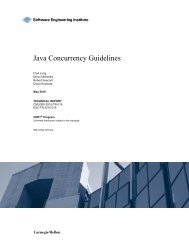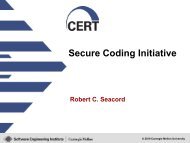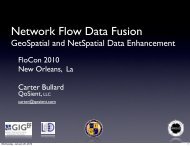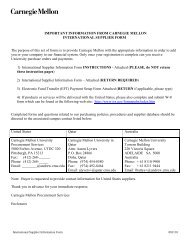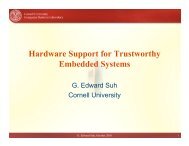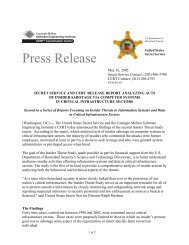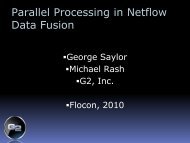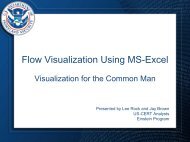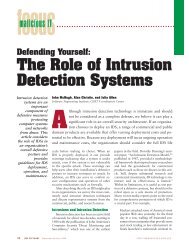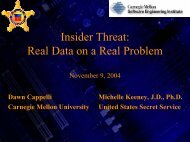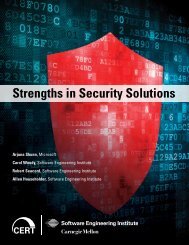CERT Resilience Management Model, Version 1.0
CERT Resilience Management Model, Version 1.0
CERT Resilience Management Model, Version 1.0
- No tags were found...
Create successful ePaper yourself
Turn your PDF publications into a flip-book with our unique Google optimized e-Paper software.
KNOWLEDGE AND INFORMATION MANAGEMENTOperationsPurposeThe purpose of Knowledge and Information <strong>Management</strong> is to establish and manage anappropriate level of controls to support the confidentiality, integrity, and availability of theorganization’s information, vital records, and intellectual property.Introductory NotesThe importance of information as an organizational asset continues to grow. The focus oforganizations has increasingly turned to intangible assets such that the ratio of tangibleassets to intangible assets continues to decrease. This supports the assertion thatinformation is one of the most—if not the most—high-value organizational assets. It is theraw material that is used by and created in services. The protection of this intellectual andenterprise capital—to ensure that it is available in the form intended for use in services—isthe focus of the Knowledge and Information <strong>Management</strong> process area.An information asset can be described as information or data that is of value to theorganization, including such diverse information as patient records, intellectual property, vitalbusiness records and contracts, and customer information. The unique aspect of informationassets is that they can exist in physical form (on paper, CDs, or other media) or electronicform (files, databases, on personal computers). The Knowledge and Information<strong>Management</strong> process area addresses the importance of information assets in the operationalresilience of services, as well as unique attributes specific to information assets such asthose described in Table 1.Table 1: Attributes of Information AssetsavailabilityconfidentialityintegrityprivacysensitivityFor an information asset, the quality of being accessible to authorized users (people,processes, or devices) whenever it is needed.For an information asset, the quality of being accessible only to authorized people,processes, and devices.For an information asset, the quality of being in the condition intended by the ownerand so continuing to be useful for the purposes intended by the owner.The assurance that information about an individual is disclosed only to people,processes, and devices authorized by that individual or permitted under privacy lawsand regulations.A measure of the degree to which an information asset must be protected based onthe consequences of its unauthorized access, modification, or disclosure.In this process area, information assets are prioritized according to their value in supportinghigh-value organizational services. Physical, technical, and administrative controls that keepinformation assets viable and sustainable are selected, implemented, and managed, and theeffectiveness of these controls is monitored. In addition, information asset risks are identifiedand mitigated in an attempt to prevent disruption where possible. Information is categorizedas to its organizational sensitivity, and considerations are made for the backup and storageof important information and vital records in case of loss or destruction, or to support theexecution of service continuity plans.145 | CMU/SEI-2010-TR-012



